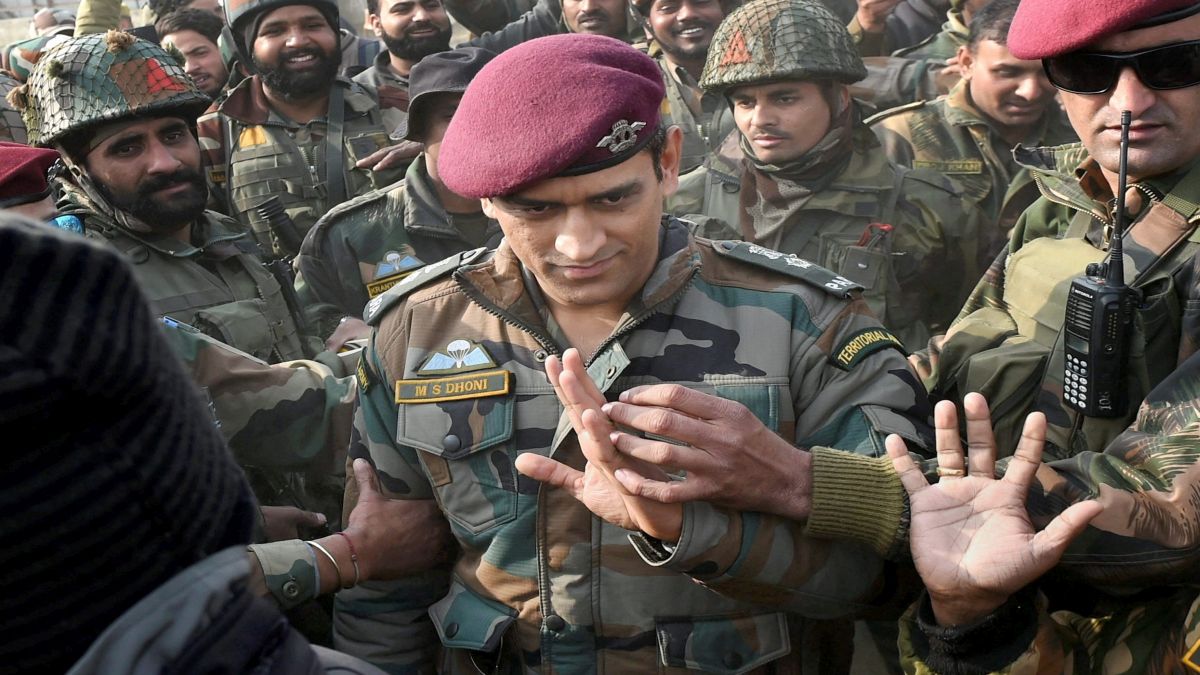It’s really hotting up now. As India and Pakistan climb the escalatory ladder following the former’s military strikes, dubbed Operation Sindoor, the Narendra Modi government has authorised the Chief of the Army Staff to call upon members of the Territorial Army.
The move comes at a time when India is facing sustained cross-border provocations, including missile and drone attacks from Pakistan. In fact, on the night of May 8, Islamabad launched at least eight missiles and a swarm of drones towards locations in Jammu, Punjab and Rajasthan, targeting civilian as well as military installations. Indian troops, however, intercepted all of them, ensuring that there was no loss of life or injury.
Amid the heightened military tension, we take a closer look at what exactly is the Territorial Army and what purpose does it serve.
What is the Territorial Army?
The Territorial Army (TA) is an auxiliary military organisation of part-time volunteers, which provides support services to the Indian Army. Also known as the country’s second line of defence, it is a part-time force that supports the Indian Army by handling non-combat duties, assisting in emergencies, and maintaining essential services.
Its primary role, as per its own website, is to “relieve the regular Army from static duties and assist civil administration in dealing with natural calamities and maintenance of essential services in situations where life of the communities is affected or the security of the country is threatened and to provide units for the Army as and when required”.
Currently, the Territorial Army comprises around 50,000 personnel, including 65 departmental units (eg, Railways, IOC, ONGC) and non-departmental infantry and engineer battalions. Specialised units like the ecological task forces work on environmental projects, such as afforestation and the Clean Ganga Mission.
To be an officer in the Territorial Army, one has to have Indian citizenship, be between the ages of 18 and 42 years, be a graduate from a recognised university, and be physically and mentally fit, and gainfully employed.
How was the Territorial Army formed?
The genesis of the Territorial Army can be traced back to the first war of Independence in 1857 when a volunteer force was raised. Later, Britain’s Sir Charles Monroe, Commander-in-Chief of the Forces, in India introduced a bill in the Indian Legislative Council on August 27, 1920 to constitute an Indian Territorial Force, which was duly passed.
He noted that on account of the paucity of trained personnel and the demands to be met, a territorial force should be formed as a second line of defence to the regular Army.
Following Independence, the Territorial Army Act was passed in 1948 and the Territorial Army was formally inaugurated by the first Indian Governor General Shri C Rajagopalachari on October 9, 1949.
Notably, in the past, Territorial Army units have been involved in India’s past operations, including the 1962 China War and the 1971 Bangladesh War. They have also provided natural disaster relief during the 1993 earthquake in Maharashtra’s Latur, Bhuj earthquake in Gujarat in 2001, and the 2013 Uttarakhand floods.
Over the years, many politicians, sportspersons and celebrities have been members of the Territorial Army. One popular example would be of former Indian cricket captain Mahendra Singh Dhoni. He was inducted in 2011 and conferred upon the rank of lieutenant colonel (Honorary). Another famous sportsperson in the TA is Kapil Dev who was inducted in 2008.
Among politicians, both Congress’ Sachin Pilot and Bharatiya Janata Party’s Anurag Thakur are Territorial Army officers.
South actor Mohanlal Viswanathan Nair is also among the famous faces in the Territorial Army. He received the honorary rank of lieutenant colonel in 2009.
What does today’s order state on Territorial Army?
In light of the escalating tensions with Pakistan, on Friday (May 9), the Defence Ministry granted the Army Chief expanded authority to mobilise the Territorial Army. In accordance with Rule 33 of the Territorial Army Rules, 1948, the government has authorised the Army chief to call out every officer and enrolled personnel of the Territorial Army as needed, either for guard duties or for full embodiment to support and supplement the regular armed forces.
The Centre’s order has approved for the embodiment of 14 out of the existing 32 Infantry Battalions of the Territorial Army for deployment across all major commands of the Indian Army, including the Southern, Eastern, Western, Central, Northern, South Western, Andaman and Nicobar, and Army Training Command (ARTRAC).
However, the mobilisation will be subject to the availability of budgetary provisions. In cases where deployment is requested by ministries other than the Ministry of Defence, the costs will be borne by the requesting ministries. The order will remain in effect for three years, from February 10, 2025, to February 9, 2028.
With inputs from agencies


)

)
)
)
)
)
)
)
)



